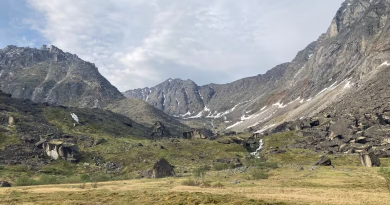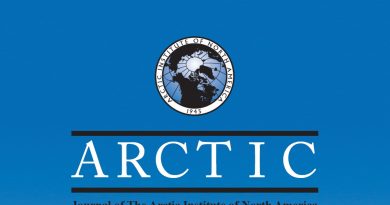University students in Montreal learn about Inuit stone carving
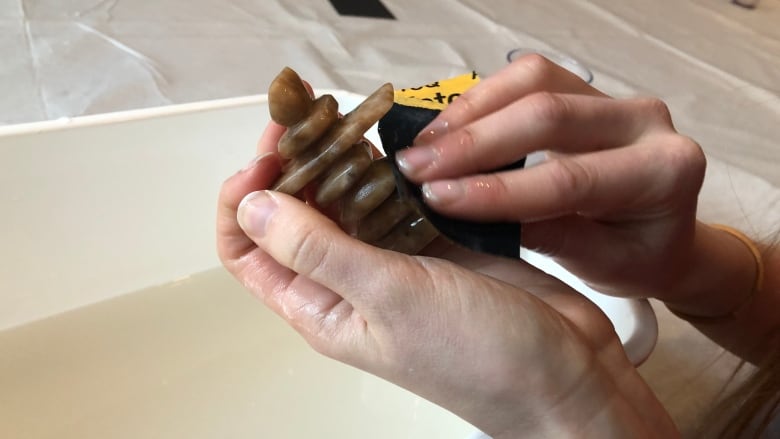
Geta Etorolopiaq has been carving stone for nearly three decades and shared his art on Wednesday with eager students at Concordia University.
“I do enjoy what I do. I enjoy passing on what I do, it keeps me in the moment,” said Etorolopiaq, who is originally from Iqaluit, in Canada’s eastern Arctic.
“Hopefully they will do the same thing because as long as you control your mind, it’s a good thing.”
He, along with Nunavik artist Niap, spent the morning demonstrating the final stages of carving small inukshuks to dozens of students.
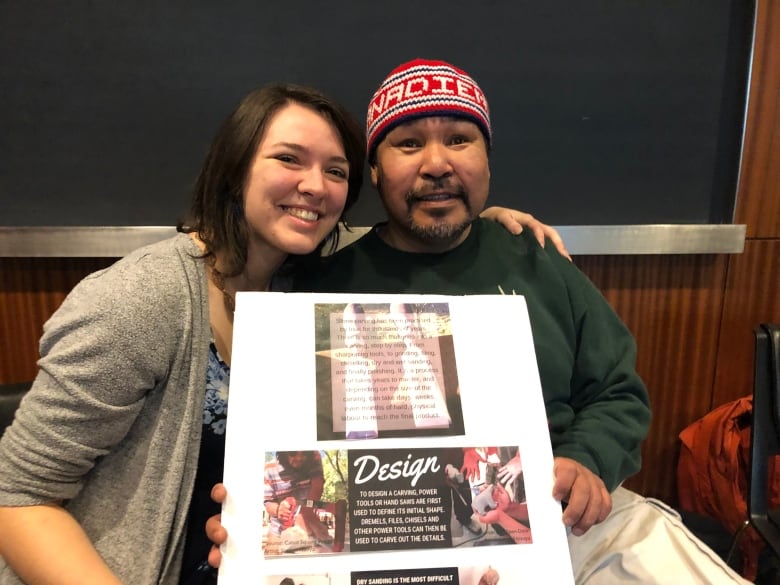
He said he doesn’t usually carve inukshuks but they’re the easiest for beginners to sand.
“The students were going to sand [and] I didn’t want to give them too much of a hard time,” he said.
The experience was eye-opening for master’s student Emily Trudeau.
“I’m just trying to learn as much as possible about Indigenous history, Indigenous art in order to know Quebec better,” she said.
“It’s been amazing. It’s very tactile, it’s very embodied and has also given me a bunch of ideas of how to do a soft introduction to youth about the contemporary presence of Indigenous Peoples and art.”
Niap, from Kuujjuaq, in the Nunavik region of northern Quebec, was another carver on site. She opens her first solo exhibition, Ivalu, at Feheley Inuit Art in Toronto this spring and told the group that she prefers to sell her work through her Facebook page rather than deal with galleries.
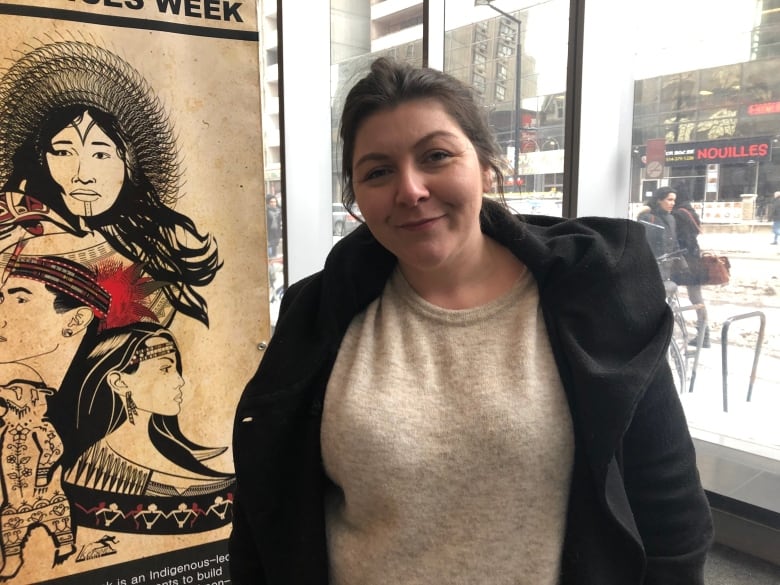
“It’s unfortunate that artists are always seen as hustlers and suffering artists and usually we don’t get our equivalent cut,” said Niap.
“There are galleries that are fair, and there are galleries that will promote you properly, but there’s unfortunately a lot of people who take advantage.”
Raising awareness of challenges artists face
It’s one of the reasons why Tiffany Ashoona organized the workshop as an event for First Voices Week, an Indigenous student-led week of activities celebrating Indigenous Peoples on campus.
“My children come from a very long line of artists and carvers,” said Ashoona, the project co-ordinator of the Indigenous Directions group at the university.
Her experience being married to a carver created a passion to support other carvers in Montreal, and to raise awareness of how much work goes into the craft.
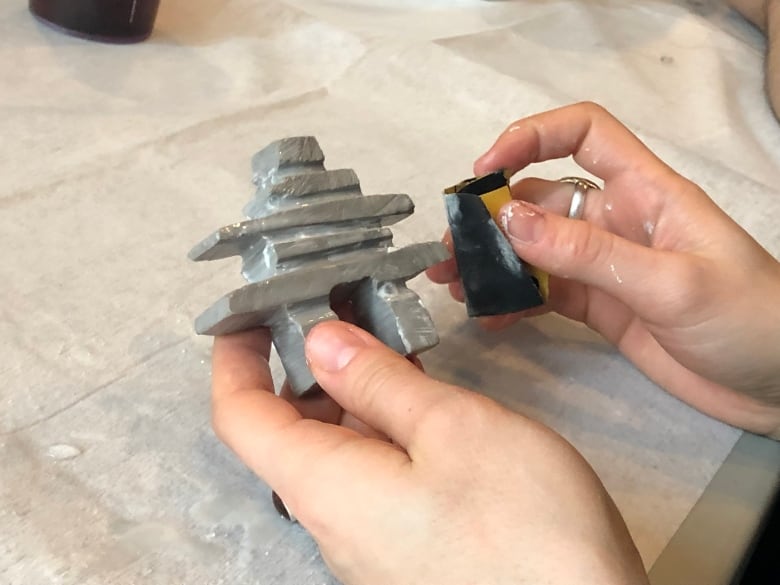
“There’s a huge injustice and a lot of racism that goes into the selling of Inuit art,” said Ashoona.
She said the father of her children used to work on large pieces that weighed around 90 kg when they were finished and sometimes he’d get offered only around 20 per cent of what a gallery would sell them for.
“At the size that they were, they would take months to do and people don’t realize that,” said Ashoona.
“Working long days with power tools and carving through marble — that takes a lot of physical effort…. I want people to know that part of it.”
Related stories from around the North:
Canada: Arctic Canadian co-operative behind renowned Inuit art program celebrates 60th anniversary, Eye on the Arctic
Finland: Sámi school preserves reindeer herders’ heritage with help of internet, Cryopolitics Blog
United States: National recognition for 2 Alaska artists, Alaska Public Media

